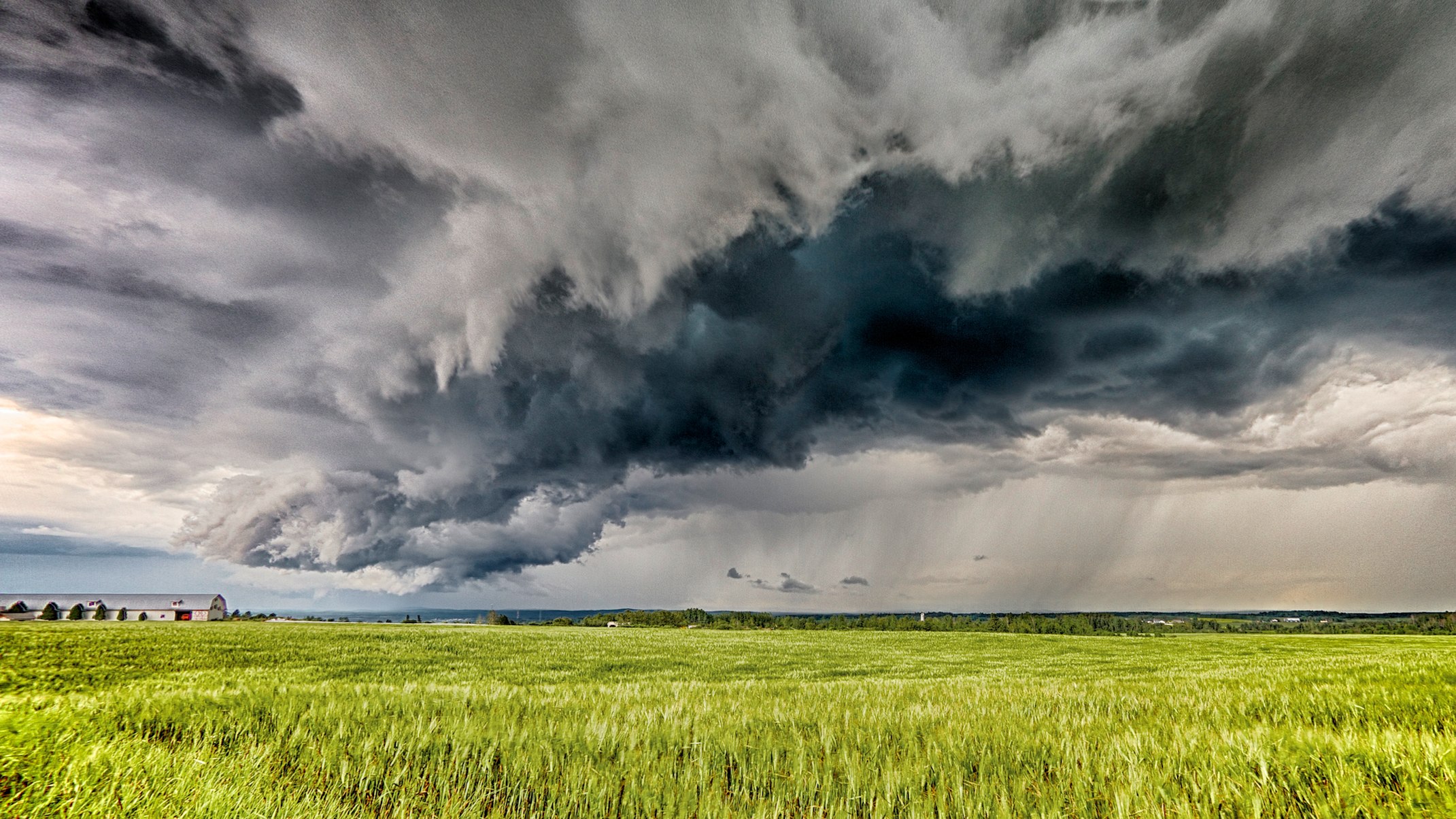The green frog (Lithobates clamitans) is a large frog native to Eastern North America. In Canada, it is found throughout the southeastern part of the country and has additionally been introduced to Newfoundland and British Columbia. So long as a permanent body of water is present, green frogs can sometimes be found in urban environments and are fairly tolerant of human activity. This makes them one of the more frequently encountered frog species in Canada. (See also Frog Species in Canada.)

Description
The green frog is a large frog that can grow up to about 10 cm long. Females are generally larger than males. Green frogs are usually either green or brown with brown spots and patches, although people have observed bronze and the rare blue individual. Most green frogs have a green upper lip and dark banding on their hind legs. Their belly is white with darker lines and spots and may occasionally have a yellow tinge. Green frogs can be differentiated from the similar-looking bullfrog by their smaller adult size and prominent dorsolateral folds. The folds start behind the eyes and continue down to the middle of the back. Male green frogs have tympani (ear drums) that are larger than their eye and may have a bright yellow throat. Females have tympani that are approximately the same size as their eye.
The larvae of green frogs, known as tadpoles, are olive green in colour with dark markings and a cream-coloured belly. They have long tails with large fins and usually reach 8–10 cm in length before going through metamorphosis.
Distribution and Habitat
In Canada, the green frog is native to Nova Scotia, Prince Edward Island, New Brunswick, Quebec, Ontario and a small part of southern Manitoba. They have also been introduced to Newfoundland and British Columbia. They are considered an invasive species in British Columbia and there are ongoing efforts to stop their spread. Green frogs are also found throughout the Eastern United States, as far west as Eastern Texas and as far south as Northern Florida.
Green frogs can be found in and around nearly any shallow, permanent body of water including lakes, ponds, streams, rivers, swamps, brooks and springs. They require permanent bodies of water for breeding and hibernation. However, in the summer juvenile frogs are found in practically any source of water, including in potholes and roadside ditches. Green frogs are also commonly seen basking along shorelines.
Green frogs typically hibernate underwater as both tadpoles and adults. Here, the temperature never drops below freezing and the level of oxygen remains high enough for them to survive until spring.
Reproduction and Development
The breeding season for green frogs lasts from late spring to midsummer. The males call to attract females, and in Canada they can be heard from June to August. Their call sounds like a loose banjo string being plucked. This “gunk!” may be heard individually or followed by several softer calls.
A female may lay two or more egg clutches in a year. The eggs are black and surrounded by two clear jelly envelopes. These eggs are laid in a large mass of 1,000-7,000 eggs, draped over vegetation in a permanent body of water. As with most species of frog, the males fertilize the eggs externally as they are being laid by the female.
The development of green frogs varies throughout their range, generally being slower in Canada compared to more southern latitudes. The eggs take less than one week to hatch. The larval stage is long, with tadpoles often living through one winter before undergoing metamorphosis into frogs. After metamorphosis, the young frogs typically take one to three years to reach sexual maturity. The lifespan of the green frog in the wild is not known. However, in captivity, they can live approximately ten years.
Diet and Predation
Adult green frogs are active during the day and night, hunting for prey in both aquatic and terrestrial habitats. They eat various invertebrates, including beetles, moths, slugs, spiders, flies, and, occasionally, small fish and amphibians. In their larval stage, green frog tadpoles eat organic matter suspended in water, such as algae, plant tissue and tiny organisms.
Green frogs have a variety of predators, including snakes, bullfrogs, large fish, various birds and raccoons.
Status and Threats
Internationally, green frogs are listed as “least concern” by the International Union for Conservation of Nature. They have not been assessed by the Committee on the Status of Endangered Wildlife in Canada. People observe an abundance of green frogs in much of their range and note the species to be fairly tolerant of human disturbances to their habitat.
Although green frogs are not considered at risk, they still face various threats. These include habitat loss, particularly the loss of wetland habitats, as well as pollution, road mortality, predation and diseases such as the ranavirus, which has been known to cause mass mortality in frog populations. (See also Frog Species in Canada.)

 Share on Facebook
Share on Facebook Share on X
Share on X Share by Email
Share by Email Share on Google Classroom
Share on Google Classroom











